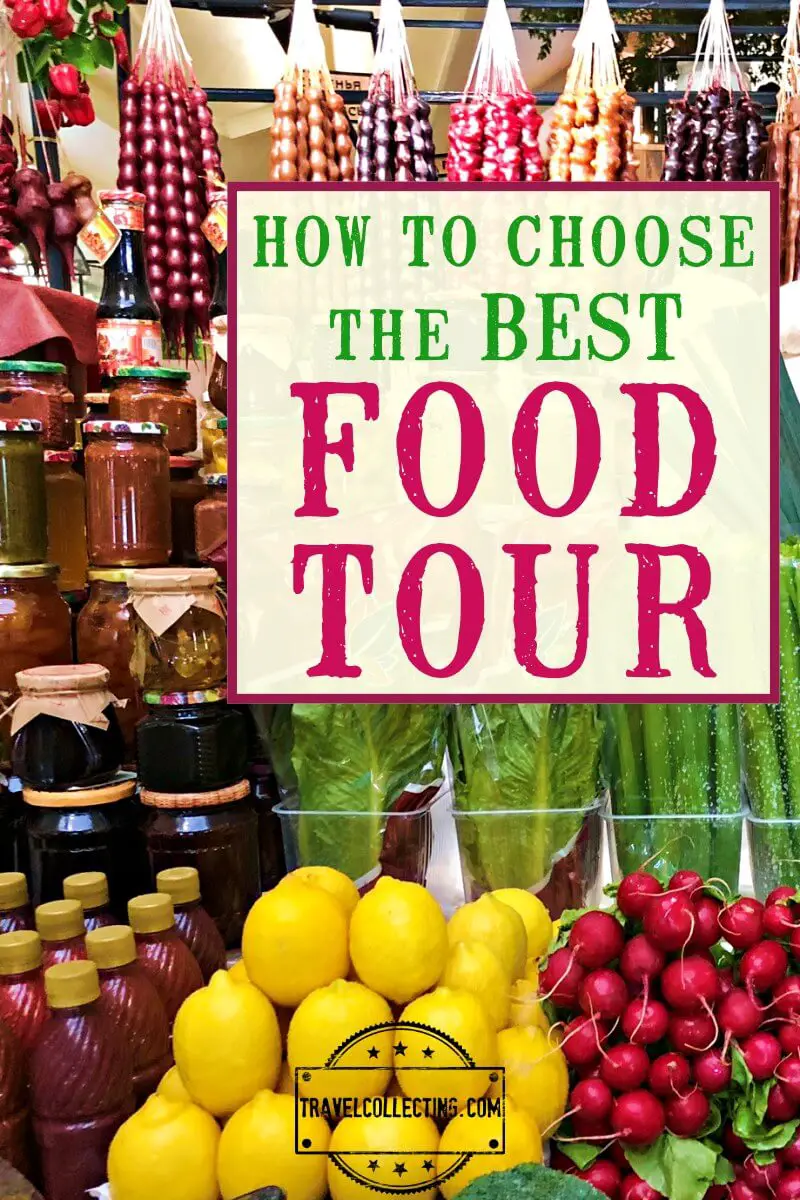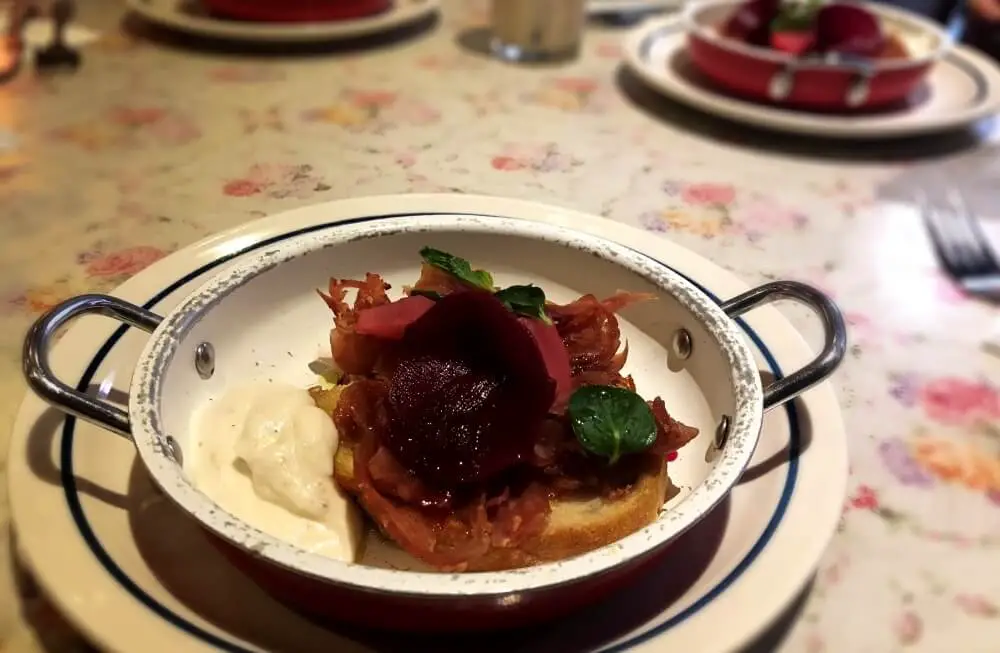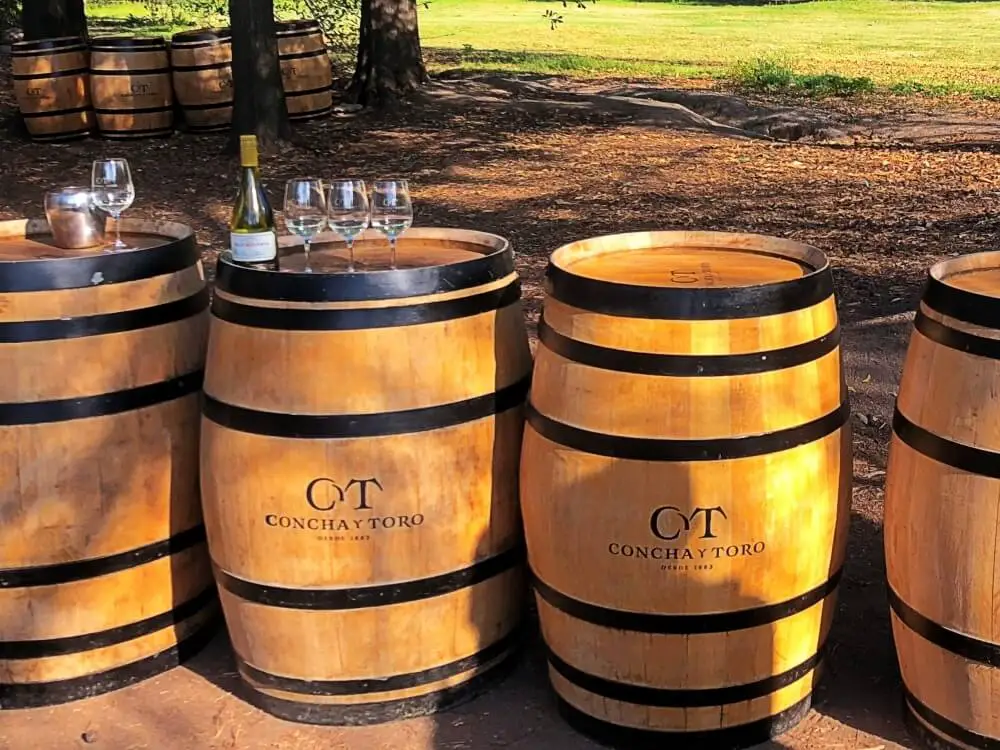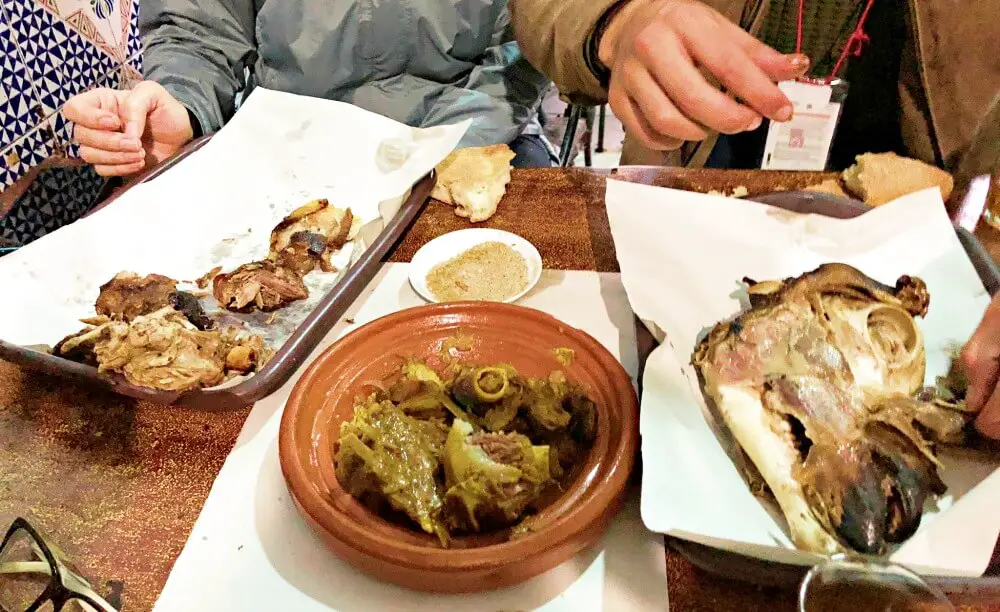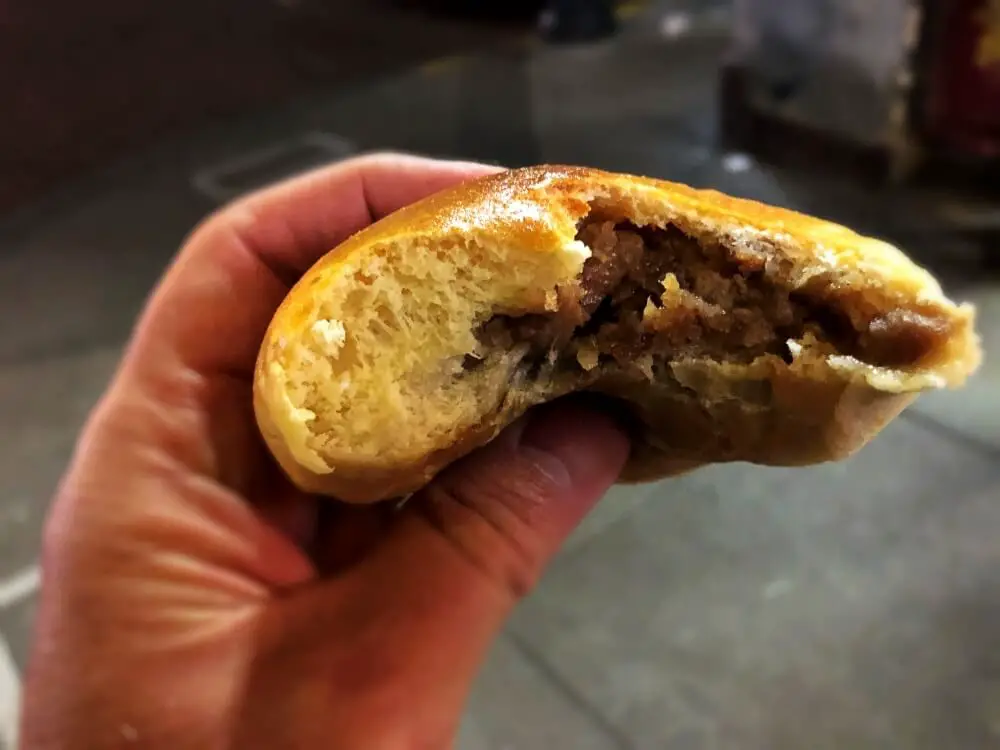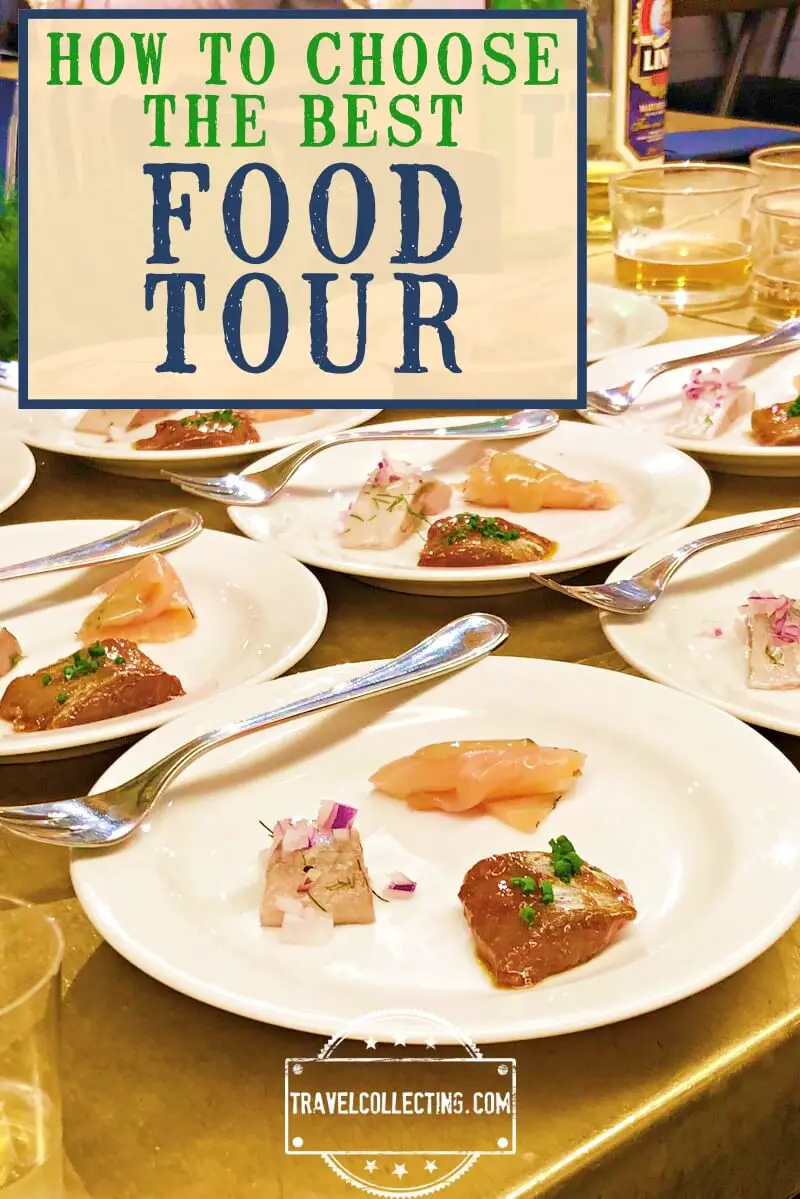Food tours are a great way to discover the typical foods of the place you are visiting. They usually include a range of different foods, including many that you may not have tried (or have thought about trying) before.
The best food tours include different foods, an expert guide and a chance to learn about more than just the food. There are several key things to consider when choosing the best food tour for your vacation.
Please note that some of the links below may be affiliate links. If you make a purchase through these links, I earn a small commission at no additional cost to you. Read my Disclaimer for more information.
How to find the best food tour
The very first step, after you’ve chosen your destination, is to try and find as many food tours as possible for that destination, so you have as large a choice as possible. I find my food tours on Viator and Get Your Guide. There is a large selection of food tours on these websites because most tour providers in each location around the world list their tours there.
If you are worried that the food tour will be more expensive if you book on one of these websites, then you can be rest assured. The prices are the same as if you book directly (they pay a small commission for their listing), and you have the advantage of their selection, support and service. Viator even sends you reminder texts with a link to the e-tickets a couple of days before the tour, so it couldn’t be easier.
If you are planning your next vacation and want to find food tour options, click on these links to find a food tour on Viator and Get Your Guide.
Things to consider when choosing the best food tour
Here are some things to consider when choosing a food tour:
1. What’s the maximum number of people?
It’s nice to meet other travelers, but very large groups can be unwieldy. Any more than 10 can be a bit of a pain, to be honest. I also like smaller groups for food tours because I get more face time with the guide and can ask lots of questions.
However, if everything else looks great, it may be worth risking a larger group. And, of course, you never know how many people have actually booked until you show up. There may be a lot fewer people than their official maximum.
2. Is there a minimum number of people required?
Some food tours require a minimum of two people before they run. This is especially important for solo travelers to be aware of. I have had several planned food tours cancelled on me the day before because I was the only one who’d booked.
If this happens, as a substitute, I always try to find a nice local restaurant and deliberately try some local specialties. You can also go to a local market and/ or street stalls and try anything that doesn’t look familiar. It’s not the same as having an expert local guide, but it’s a way to still experience some local cuisine.
3. What language is the food tour in?
Unless you speak the local language, make sure the tour is in English. Food tours are about more than just the food – they are a chance to learn about the food and culture.
4. Where do you go?
Is the food tour in a local market? Do you go to a restaurant? Do you go to multiple places? Do you walk a lot? Take public transportation?
In general, I think the best food tours not only have a variety of different foods, but they also go to a variety of different places. However, I have also had great experiences in just one marketplace or even one restaurant.
If you aren’t able to walk a lot, you will want to make sure you know how much walking you will be expected to do.
5. What foods do you try?
Firstly, are there things that you can eat? If you are vegetarian, or have other dietary restrictions, you should definitely let the tour company know in advance. Many places will be able to find substitutes for you if they know in advance, but sometimes they may advise you that the tour is just not suitable for you.
How much food will you get? You will typically end up eating quite a lot, so try not to be very full (but don’t be starving either, as you will eat slowly along the way). However, some food tours definitely have more food – and more dishes to try – than others.
Are they snacks or full meals? It is not uncommon to have one or two main meals dishes, with most other foods being snacks. You will typically (but not always) end with sweets/ desserts.
It’s worth keeping in mind that food tours are an opportunity to try new things. As long as you can’t eat something for religious or ethical reasons, I recommend giving everything a try. Be adventurous and go out of your comfort zone. Even if it just a little mouthful. I HATE pickles and beets, but I still tried garlic pickled in beet juice when I was in Moscow. I also ate a sheep’s eyeball in Marrakech and pickled herring in Stockholm. (I drew the line at olives, but everyone has a line they just won’t cross.)
Subscribe to regular updates with tips for planning, travel inspiration and trip ideas and get instant access to the free PDF of this
Guide to Choosing The Best Food Tour
6. What is included?
Usually all food and some drinks are included, but alcoholic drinks are often not, even though they may be available for purchase, especially if you stop in a restaurant. Check in advance so there are no surprises.
Check too if tips are included or expected. Usually they are neither included nor expected, but are always appreciated.
7. Is it just food or is it a cultural / walking tour as well?
Food tours are also often walking tours around an interesting neighborhood or market. The best ones combine the actual food with information about not just the food, but the country, city and/ or culture you are in. Guides should be knowledgeable and local (and have good enough English to communicate all this easily).
8. How long is the food tour?
Lengths vary, but they are typically between 2.5 hours and 5 hours. About 3-4 hours is most common.
9. What time of day is it?
Times vary quite a lot. Many are around lunch time; others are in the evening. It is not uncommon to have the tour between lunch and dinner, when it is possible to find space for a group in popular restaurants.
10. Will you get a list of foods emailed to you?
This doesn’t happen as often as it should. I like getting a list of the foods I have tried. I have received this in a booklet, which was great. However, even a short email a few days after the tour is nice to get.
For a look at other kinds of foodie travel, check out my Foodie Guide to Travel. And take a look at my Guide for Choosing the Best Travel Cooking Class.
If you are planning your next vacation, add a food tour to your itinerary. Search your destination in Viator and Get Your Guide.
Subscribe to regular updates with tips for planning, travel inspiration and trip ideas and get instant access to the free PDF of this
Guide to Choosing The Best Food Tour
Have you taken a food tour you loved? I’d love to hear about it.
If you found this guide helpful, pin it to you Food Travel board or Food Tour board for later!
About the author

James Ian has traveled to 82 countries and all 7 continents. He is passionate about experiential travel, i.e. meaningful travel that actively engages with the environment and culture. He helps people have similar experiences that involve active participation in activities and festivals; engaging with the local food and handicrafts through lessons and food tours; and interacting positively with environment by hiking, riding, rowing, diving and low/no impact animal encounters.
More travel planning resources:
- More Foodie Travel information
- How to choose the best travel cooking class
- Trip Planner
- Planning Resources
- Common travel scams (and how to avoid them)
- Country Guides
- Guide to buying travel insurance
- Other travel experiences
Travel Collecting is a participant in the Amazon Services LLC Associates Program, an affiliate advertising program designed to provide a means for sites to earn advertising fees by advertising and linking to amazon.com. Amazon and the Amazon logo are trademarks of Amazon.com, Inc. or its affiliates.


